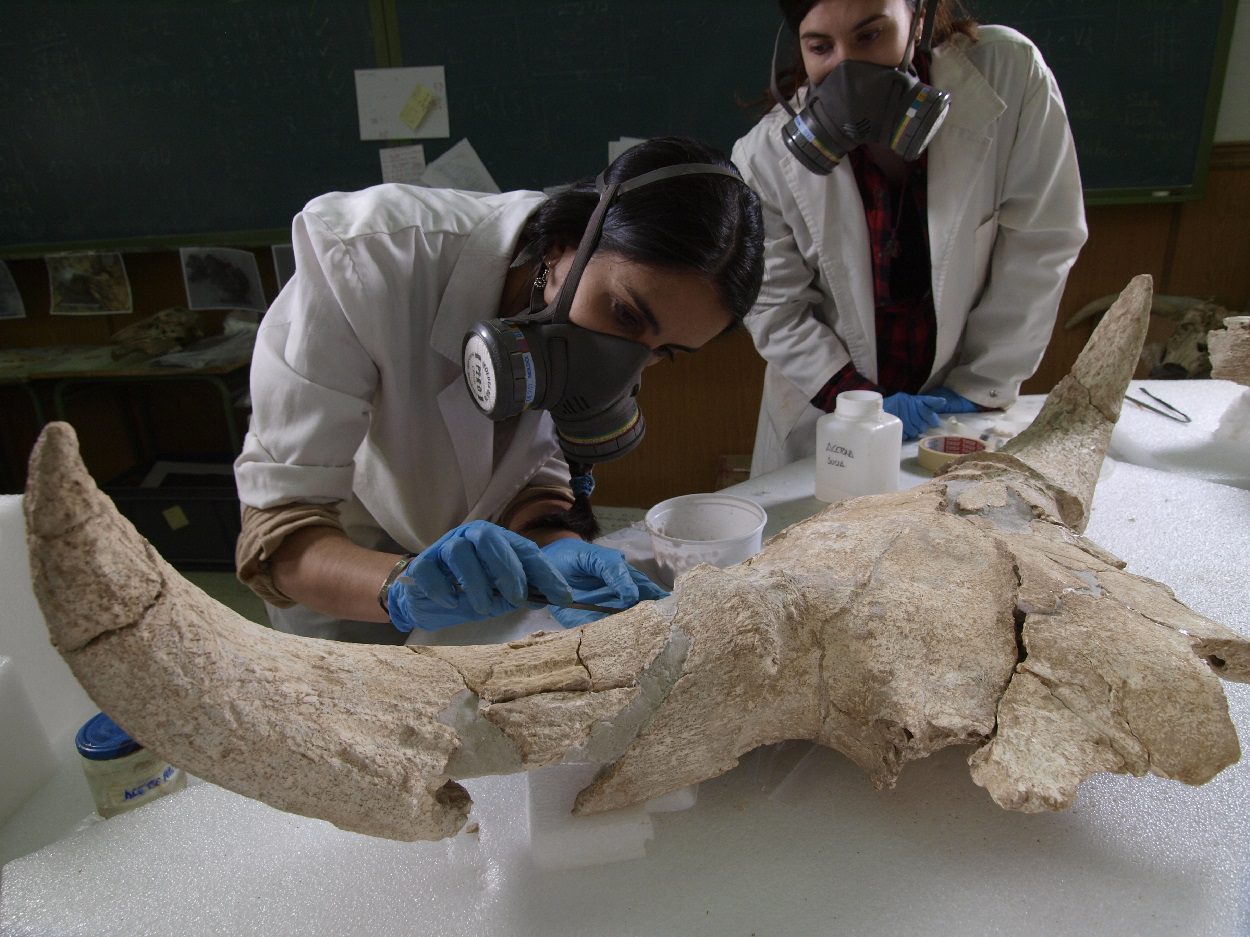A study by archaeologists and palaeontologists from the National Centre for Human Evolution Research (CENIEH), working in collaboration with the Atapuerca Foundation, have suggested that Neanderthals possessed symbolic capacity and kept animal skulls as hunting trophies with probable “ceremonial” intention.
Neanderthals, also written as Neandertals, are an extinct species or subspecies of archaic humans who lived in Eurasia until about 40,000 years ago. Neanderthals made use of a wide array of food, mainly hoofed mammals and other megafauna, plants, small mammals, birds, and aquatic and marine resources.
The researchers found a large number of herbivore skulls at the Cueva Des-Cubierta archaeological site, a cave in the Lozoya Valley, north of Madrid, Spain.
The study, published in the journal Nature Human Behaviour, reveals how the skulls from bison (Bison priscus), aurochs (Bos primigenius), red deer, (Cervus elaphus), and steppe rhinoceroses (Stephanorhinus hemitoechus), were prepared following a specific process: The mandible and upper maxilla were removed, then the brains were consumed, leaving only the horns or antlers to be placed in the cave as hunting trophies.
Juan Luis Arsuaga, a palaeontologist from the Complutense University of Madrid said: “We have been able to verify that this activity was kept up over several generations, if not longer, which leads us to conceive of a cultural tradition that would have been handed down over time”.
Excavations at Cueva Des-Cubierta also uncovered Mousterian stone tools (named after the type-site of Le Moustier in France), in addition to anvils and hammerstones used to fracture the skulls.
The raw materials they used were of local origin and highly varied. According to the researchers, the Neanderthals knew how to make the most of each material, adapting their technology and needs to what was available for their daily activities.
This behaviour is not related to subsistence activities, but instead suggests that Neanderthals created symbols by depositing hunting trophies in places of worship.
“Up until now, our species had been considered the only one with capacity to attribute concepts to symbols, but with these new findings, the theory needs to say that this intellectual attribute is shared with the Neanderthals”, said Enrique Baquedano, Director of the Archaeological and Palaeontological Museum of Madrid.
Header Image Credit : Javier Trueba





